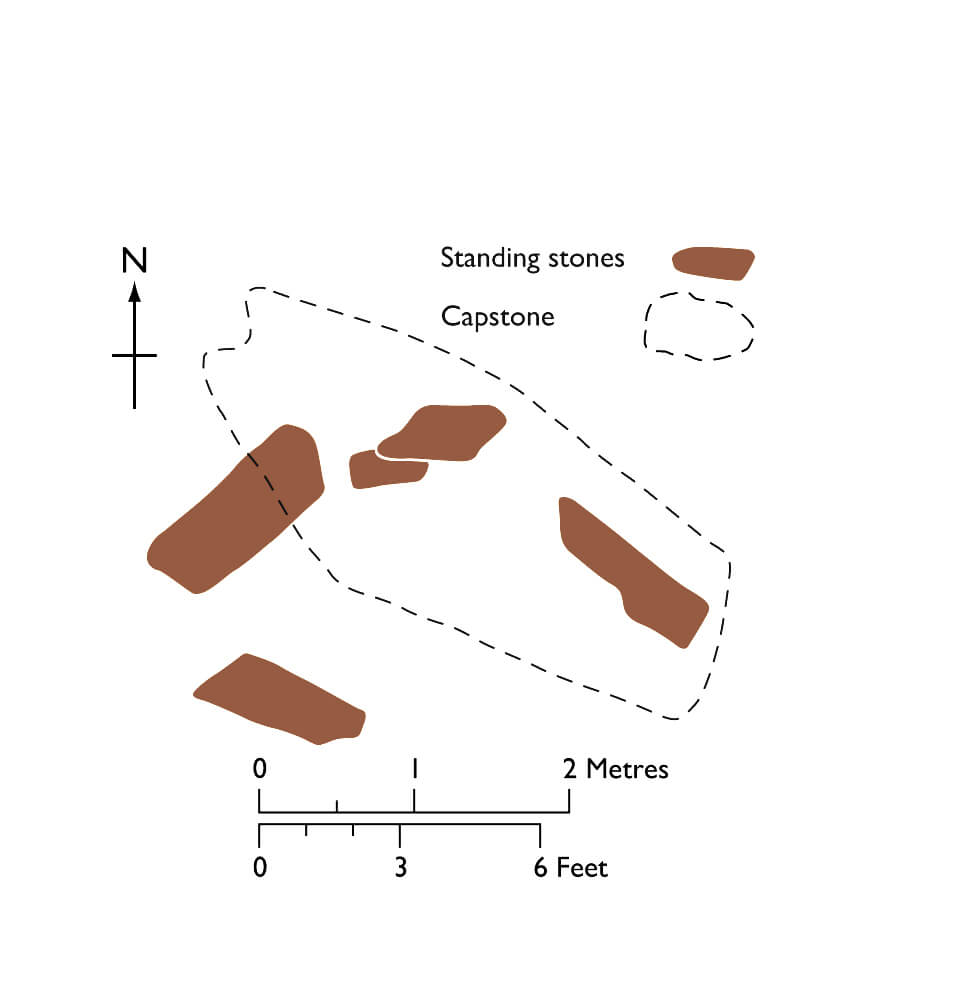History
Ty Newydd tomb was erected during the Neolithic period (4000-2000 BC) by an early-agricultural, organized community. Its building was associated with the transition from gathering and hunting to a more settled life, which influenced the development of a sense of territoriality and rights to inheritance, and thus the desire to pay tribute to ancestors. Probably in the Bronze Age tomb was used again by the population of the Beaker Culture, which fragments of ceramics were found during archaeological research.
Architecture
Ty Newydd was situated at the top of a low hill. The burial chamber of the tomb was built of four or five stones arranged vertically with their longer sides, which supported a large capstone that served as a ceiling. The huge boulder was used for this role, almost 4 meters long, 1.6 meters wide and 1.2 to 1.8 meters thick. The area of the chamber is marked by charcoal from the hearth at the eastern end, where it is assumed that there was a second chamber or passage. The entrance to the chamber was on the north-eastern side. In it there were ceramics from the Bronze Age. Originally, the whole chamber was covered with an artificial mound of earth or stones (cairn) with a diameter of about 32 meters.
Current state
Only the dolmen, which used to form a burial chamber, have survived to this day, while the stone and earth mound (cairn) has been completely dispersed. Currently, the top, largest stone of the dolmen is slightly skewed and is therefore only supported by three of the four stones.
bibliography:
Castleden R., Neolithic Britain: New Stone Age sites of England, Scotland and Wales, London 1992.
The Royal Commission on The Ancient and Historical Monuments and Constructions in Wales and Monmouthshire. An Inventory of the Ancient Monuments in Anglesey, London 1937.
Website coflein.gov.uk, Ty Newydd megalithic burial chamber.



